In the ski resort of Manigod in the Alps of the Haute Savoie is the restaurant Maison des Bois. The nearest airport is Geneva, a 75 km drive, and it is 35km away from Lake Annecy. Maison des Bois opened in 2013 and is the culinary home of legendary chef Marc Veyrat. He had achieved the rare distinction (in 2001) of running two (almost) concurrent three Michelin star restaurants: Auberge de l’Eridan at Veyrier du Lac in Annecy and La Ferme de Mon Pere in Megeve, the latter featuring a stable with animals, separated by a glass screen and floor panels from the dining room. Auberge de l’Eridan operated in the summer from April to November, the latter in the winter, from December through March. To be fair, Eugenie Brazier did this long ago, running a pair of three star restaurants in the 1930s in Lyon and the Alps, and Alain Ducasse had both Louis XV and Plaza Athenee in Paris just prior to Veyrat's double act. Mr Veyrat's cuisine was based on native ingredients, and he was foraging in the hills for ingredients long before Rene Redzepi, who has recently popularised foraging. Veyrat’s modernist style of cooking included exotic dishes such as eucalyptus sorbet, and he was using edible flowers in his cuisine as far back as 1990.
Marc Veyrat’s family were shepherds, and he was brought up in Manigod. Self-taught, he started his first bistro in 1979 and in 1985 opened Auberge de l’Eridan, gaining a Michelin star within a year and a second star a year later, the ultimate third star coming in 1995. Mr Veyrat was also the first chef ever to be awarded 20/20 in the Gault Millaut guide (the only other chef to be granted this score was Sergio Hermann of Oud Sluis). A brilliant chef but a less gifted businessman, Mr Veyrat had to briefly close the three star restaurant in 1996 with reported debts of $6 million, but the banks to whom he owed the money relented and allowed him to trade his way back into profit. He was badly hurt in a serious skiing accident in 2006 and was forced to stop cooking until he opened this restaurant in 2010. He is no stranger to misfortune, with a fire burning Maison du Bois to the ground in March 2015, but it was rebuilt and the restaurant gained two Michelin stars, with a third in the 2018 guide. The new Maison du Bois building is actually on the site of the property where Marc Veyrat was born in 1950. It is set over two floors, with the dining room upstairs and a lounge area set around a large fireplace at ground level. There is terrace seating for drinks, and from here and from the window seats upstairs there is a spectacular view out over the mountains and trees.
The menu is a tasting menu format only, at €395 (£351); there seemed to be a slightly reduced version of the menu available at lunch, though this was not shown. The wine list was substantial and arrives in two huge wooden folders, one each for white and red. There were just seven wines listed under €100 on the entire list, and at the other end of the scale was Romanee Conti 1989 at €19,995 for a bottle whose current market price is €19,145. The pricing was as hefty as the wooden folders, with hardly any wines under €150. Example labels were Savoie Persan St Germain 2016 at €90 for a bottle that you can find for €23 in the high street, Jean Reverdy et Fils La Reine Blanche Sancerre 2016 at €130 compared to its retail price of €31, and Guigal Brune et Blonde 2011 at €190 for a bottle that will set you back €64 in a shop. For those with the means, Didier Dagenau Silex Pouilly Fume 2014 was €350 compared to its retail price of €128, and Leoville Las Cases 1992 was an obscenely priced €880 for a bottle whose current market value is €173. Wine pairings ran from €295 per person (!) at lunch to €395 per person with the tasting menu at dinner. We ordered a couple of bottles off the list instead.
The meal began on the terrace with a quartet of nibbles served on a wooden board. A small bowl of cauliflower soup came with a lemon mousse, and was pleasant though lukewarm. A bowl of snail soup flavoured with anise was better, and there were also a pair of crisps of potato and polenta. One of these was topped with tomato and fish mousse, the other with anchovies and pepper. The latter were crisply fried and enjoyable, though with the best will in the world it was difficult to be thrilled by these nibbles (average just about 16/20). On moving to the dining room we were presented with an impressive trolley of loaves, sliced to order. The breads that we tried were very good, though not dazzling, with enjoyable texture and flavour (17/20).
Slivers of foie gras terrine came with juice of a herb with an anise-like flavour, which had a French name called “myrrh odorant” with no obvious English translation, as well as fig chutney. I am not entirely sure what the herb juice really added, but the foie gras was lovely, with silky texture and deep livery flavour, and the fig flavour went well with it (18/20). Next was “chef’s crazy potage”, a warm soup of red beans, morel jus and wild spinach. This was lovely, the seasoning spot on, the spinach having excellent flavour and the morel flavour coming through well (19/20). This was followed by quail egg with oxalis (wood sorrel) leaves with sugar, which puzzled me as it seemed simply too sweet (maybe 14/20).
Next was a fish bouillon served with a little bowl of trout roe in cauliflower jelly. The bouillon was had good flavour and went well with the trout roe, but ultimately it was hard to get excited about eating fish stock and fish eggs (15/20). Next was a little bowl with strands of pasta hanging over it. Diners were encouraged to try a strand of the pasta, which was flavoured with cheese, before the rest of it was lowered into the bowl of bouillon, the latter flavoured with cumin and mushroom. The pasta rapidly dissolved in the bouillon. This was all very theatrical, but ultimately resulted in a pleasant bouillon of mushroom, cheese and cumin, which was pleasant but was not going to set the world alight (16/20). Mr Veyrat is clearly keen on soup, as this was followed by yet another one, in this case of lobster with cream of wild verbena, the bowl covered in a pastry case. This was better, the lobster tender and the soup having good intensity, the lemony verbena flavour going nicely with the shellfish (18/20).
This was followed by trout from Lake Geneva steamed with milk and vegetable juice thickened with manioc (cassava) and flavoured with thyme. The trout had nice flavour and was carefully cooked, though there are limits to how thrilling a piece of trout can be (16/20). Better was a large langoustine tail cooked on a hot rock, offered with little cubes of sugar flavoured with wild thyme and a herb described as “queen of the fields”. I am not sure that the langoustine really needed embellishment, lovely as it was, tender, sweet and delicious (19/20). This was followed by a take on the hearty Savoy dish tartiflette, which in this case was a cream flavoured with onion, potato, Reblochon and lardons that you were encouraged to suck through a straw. I am not sure that this improved things, and perhaps just serving a little taste of normal tartiflette would have been better, though it was nice enough (15/20). The final savoury dish was lamb cooked in hay, served with thyme sauce, black truffle puree and a little side dish of crisp rice with pistachio. This was all very enjoyable, the lamb cooked rare and having plenty of flavour, the crisp rice adding a different texture and the truffle bringing its aromatic earthiness (18/20).
A large cheese board was almost entirely supplied from the local village, including local Reblochon, with just some Beaufort from further afield. The condition of the cheeses was excellent, and it was interesting to see local cheeses rather than the standard grand cheeses of France.
Creme brûlée was set in the underside of a seemingly empty dinner plate, which was flipped over with a theatrical flourish to reveal the dessert. The un-blow torched brûlée was very pleasant, with good vanilla flavour, though I am not sure what was really gained by the presentation (17/20). An array of desserts was now presented on a huge wooden board. There was a kind of local beignet with apricot jam, an apricot tart with sugar tuile, passion fruit jelly with strawberries, a soufflé poire William, tartlets of strawberry, apricot, chocolate and pistachio and, er, girolle, and an ice cream that tasted of spearmint. As a final theatrical touch, a chocolate sphere was flambeed with chartreuse. The desserts were very good, the soufflé light and fluffy, the tart excellent and the chocolate suitably rich (18/20). Coffee was fine.
One oddity was that portion sizes were surprisingly large. Of course it is better to have too much food at a restaurant than to leave hungry, but in a tasting menu I would expect the kitchen to gauge the portion sizes so that you have a reasonable chance of finishing, especially in this cases where the menu is kept a surprise and so you don't know how many courses are still to come. It was also curious as to just how many courses were soup or some variant on soup - at one point I thought I was eating at the most expensive soup kitchen in the world.
Service itself was excellent throughout the evening, the staff friendly and attentive. As a final kind gesture, the manager himself dropped us off at our hotel when it proved impossible to find a taxi. The bill came to €702 (£623) a head, albeit with quite a lot of wine. If you shared a modestly priced bottle (good luck finding one of those on this list) then a typical cost per head might be around €420 (£373). This is Paris level pricing. I have rather mixed feelings about coming here. I enjoyed Marc Veyrat’s food so much back in the day that all these years on it was almost certain to be a relative disappointment here, and so it proved. Objectively this was a good meal, albeit at an absurd price, and certainly the setting is spectacular. However if you are looking for top notch three star cooking these days then you can do better elsewhere, and the third star seems to me a gesture towards past glories rather than an objective assessment of current capabilities. Nonetheless, the world owes Marc Veyrat a debt for the undoubtedly huge impact he has had on world cuisine, and there is no doubting the influence he has had on modern cooking. Those with fond memories of the old days might just want to cherish them rather than come here, or at least do so with realistic expectations.










































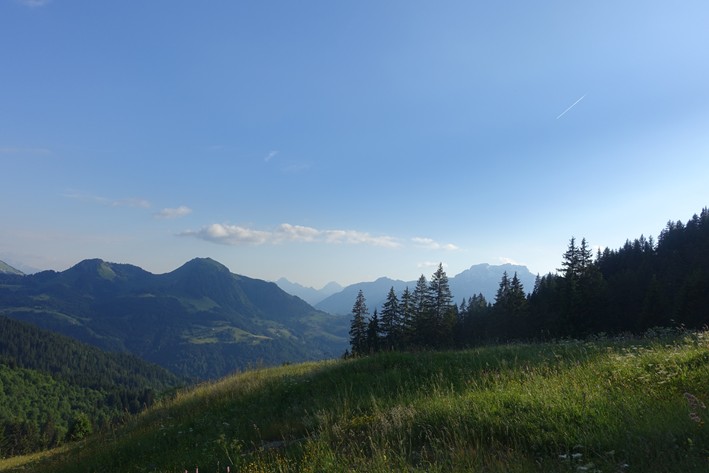

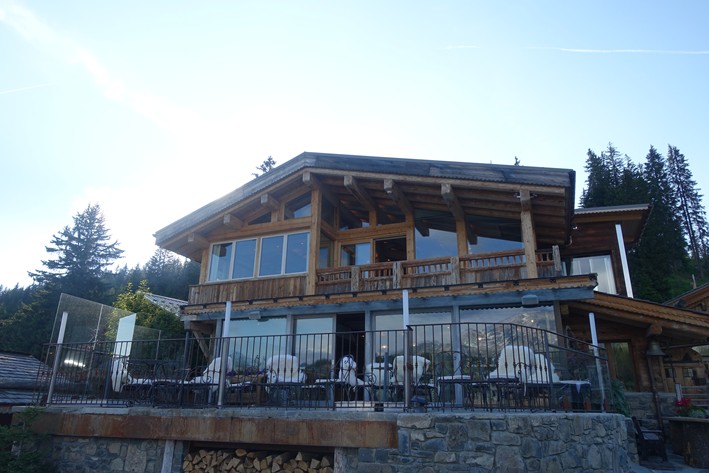
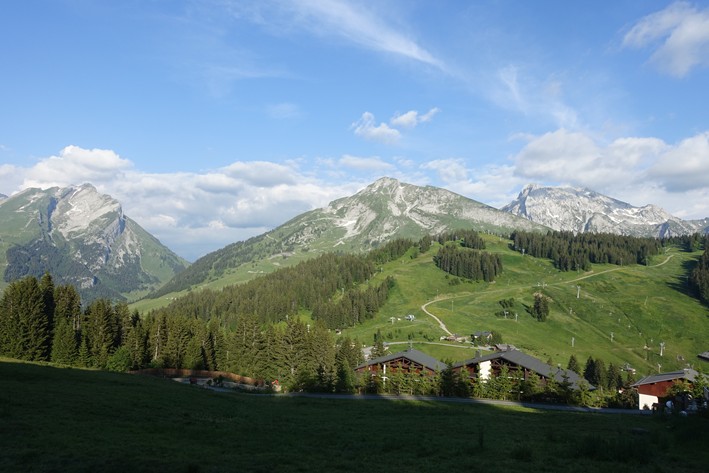

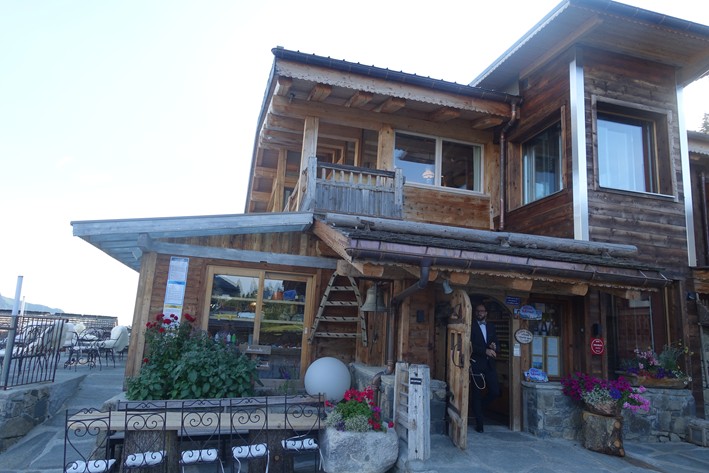
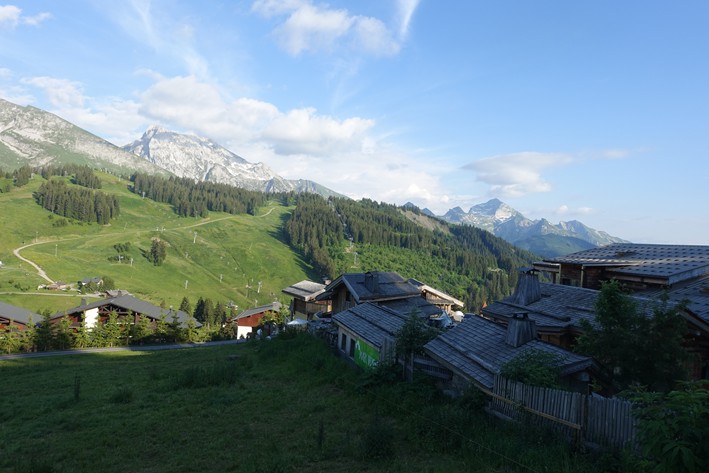
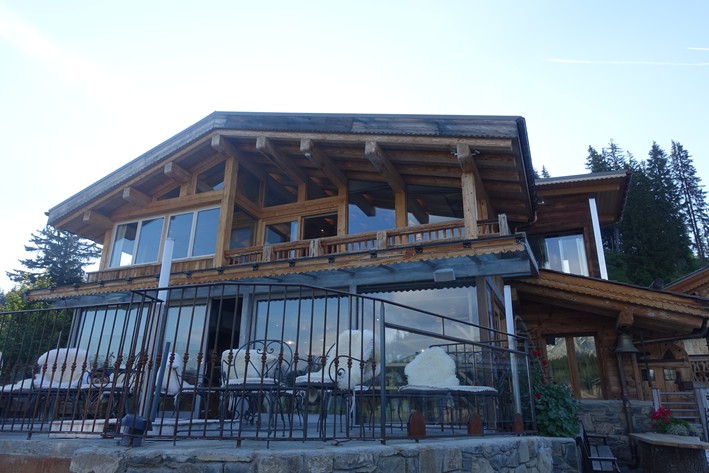

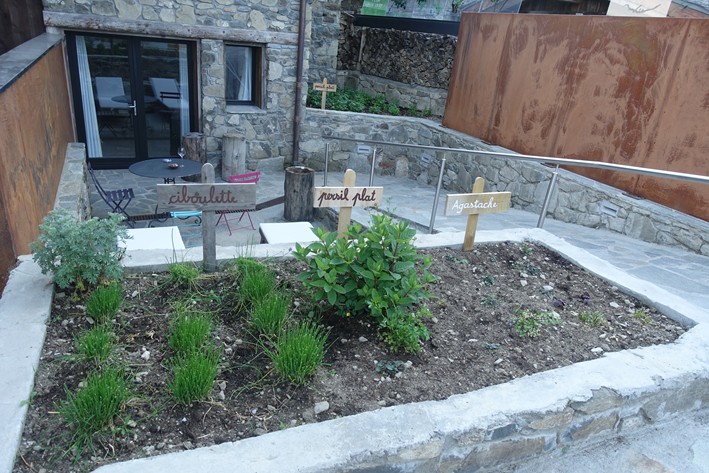
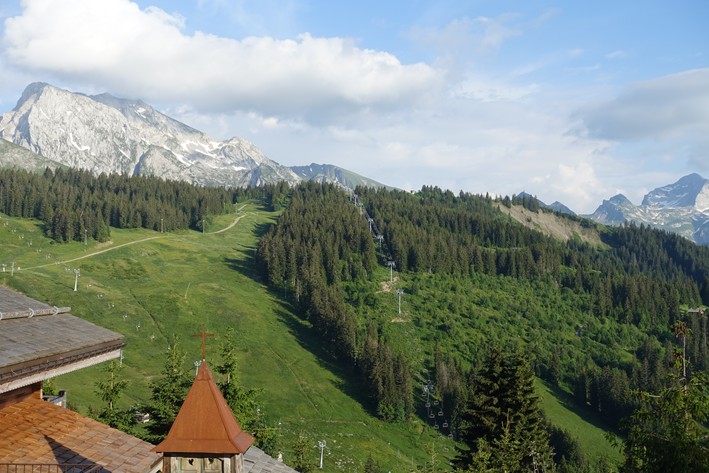

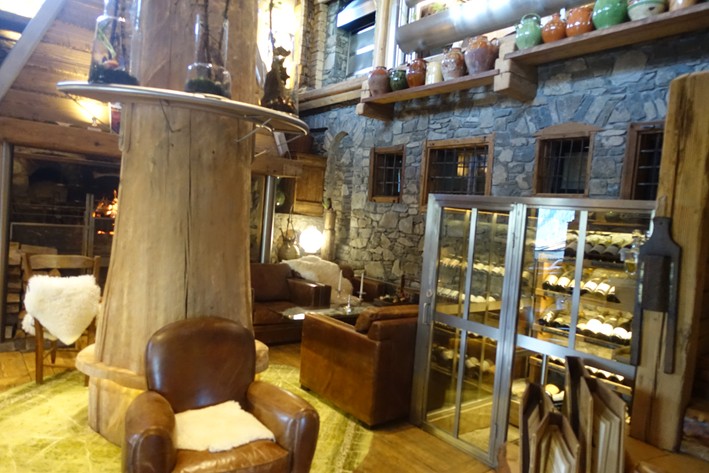
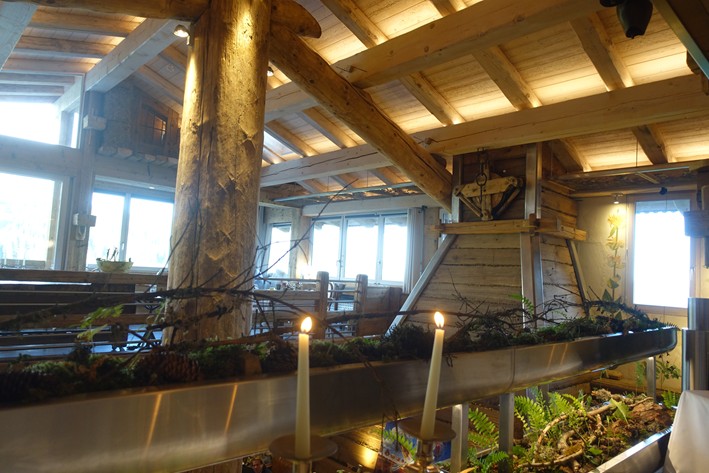
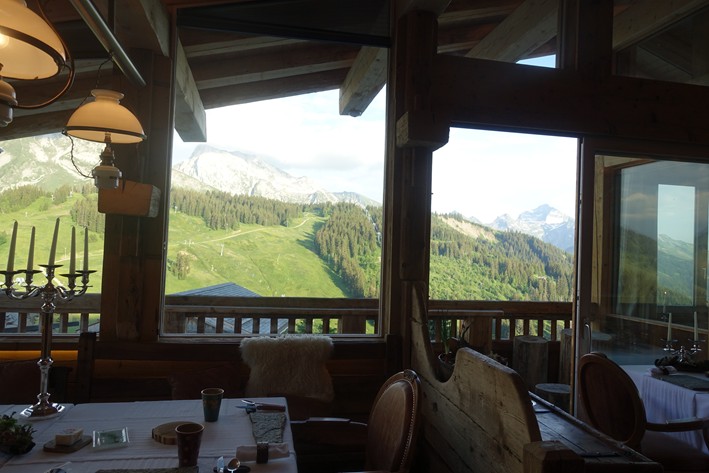




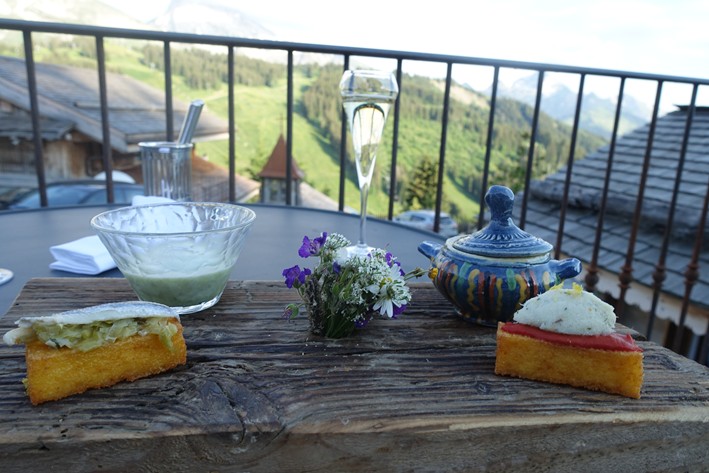




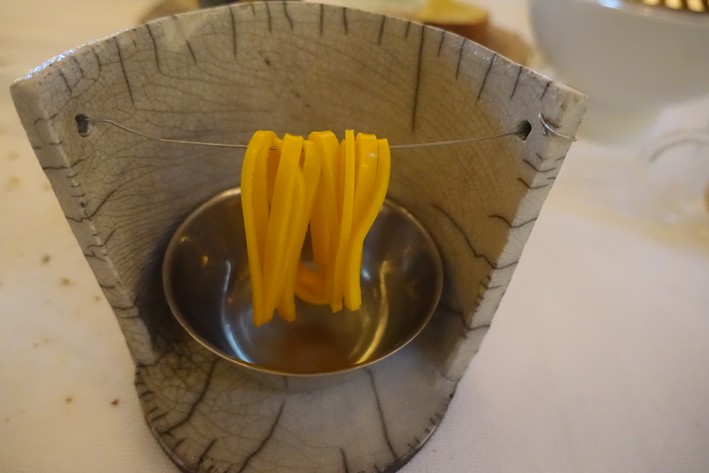
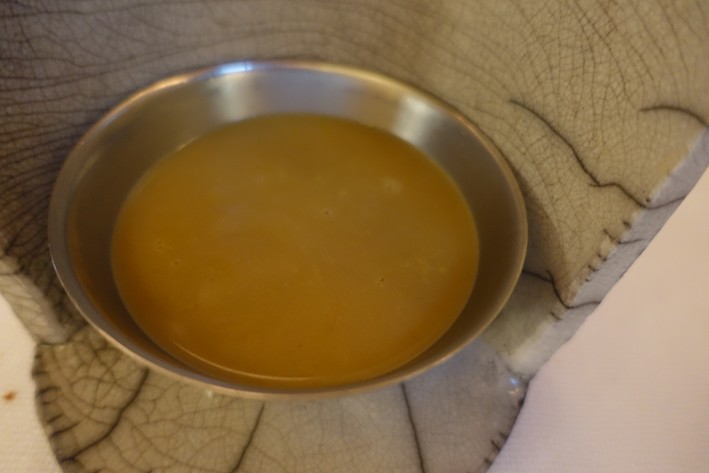
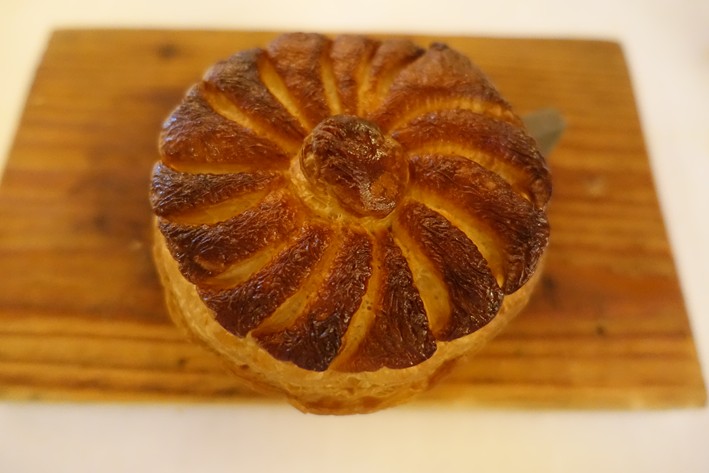
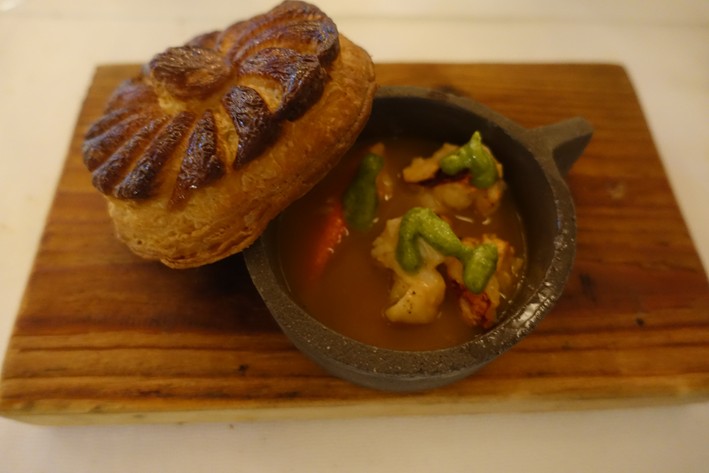

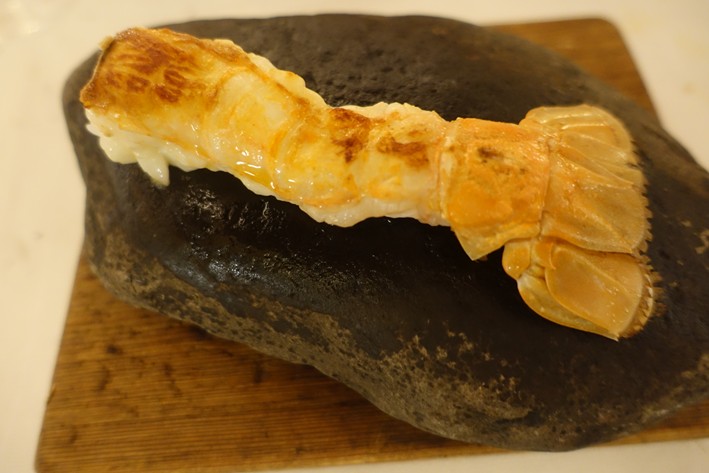
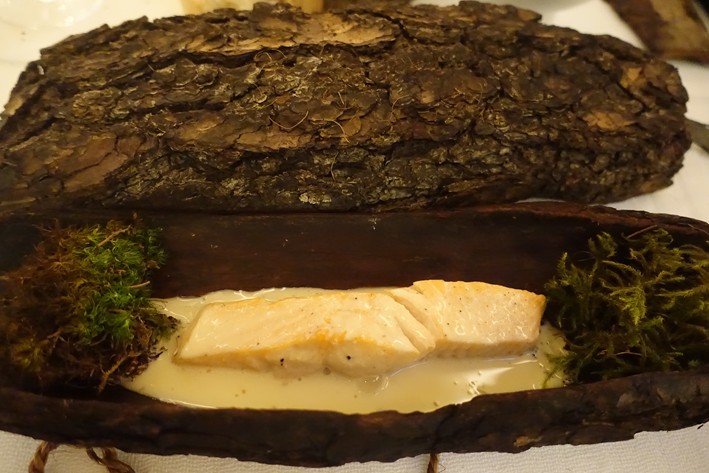
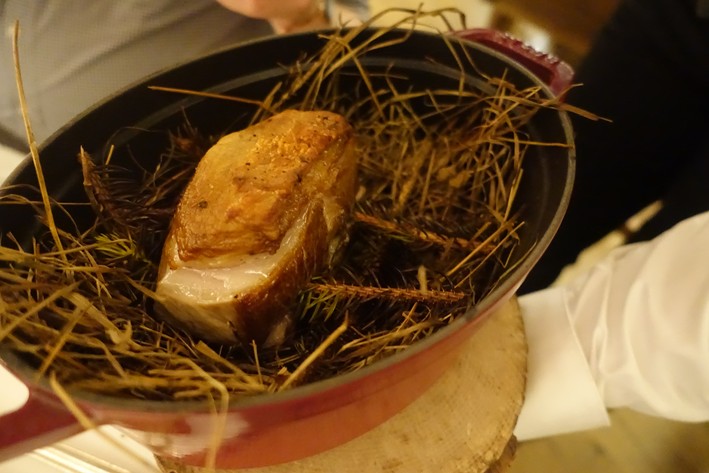




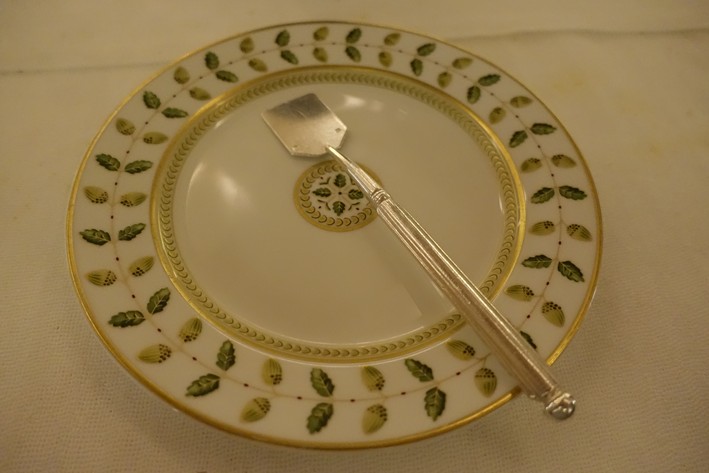
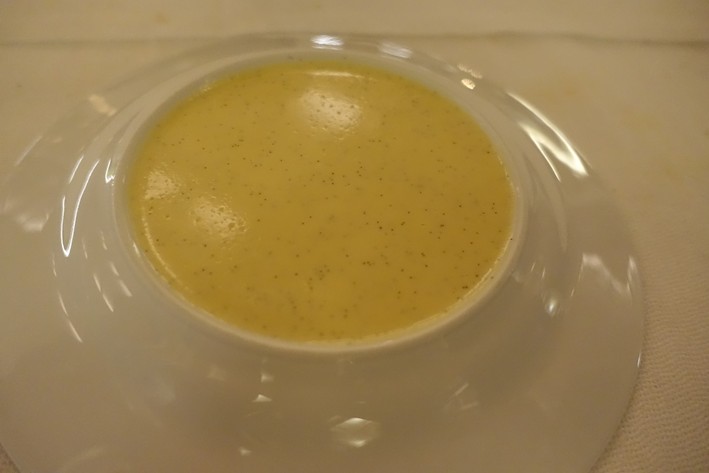


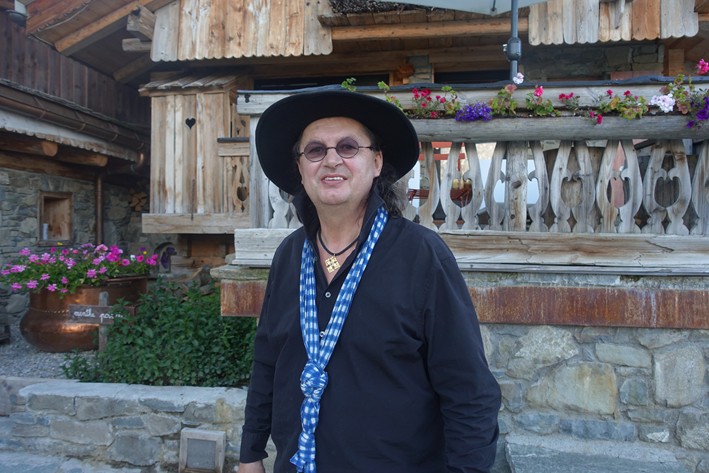

Alastair Mallick
I believe the 'myrr odorant' is known here as Sweet Cicerly, latin name Myrrhis Odorata. Lovely delicate anise herb. Love reading your reviews, thanks.